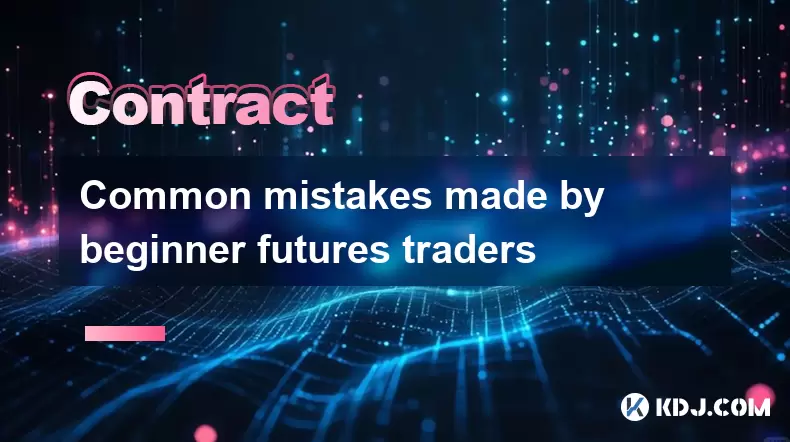-
 Bitcoin
Bitcoin $118,698.3676
0.16% -
 Ethereum
Ethereum $3,428.4877
5.97% -
 XRP
XRP $3.2496
9.52% -
 Tether USDt
Tether USDt $1.0002
0.00% -
 BNB
BNB $725.6930
4.36% -
 Solana
Solana $174.8923
4.52% -
 USDC
USDC $0.9997
-0.02% -
 Dogecoin
Dogecoin $0.2139
6.02% -
 TRON
TRON $0.3155
4.62% -
 Cardano
Cardano $0.8045
7.12% -
 Hyperliquid
Hyperliquid $46.6582
-1.72% -
 Stellar
Stellar $0.4676
0.80% -
 Sui
Sui $4.0143
0.38% -
 Chainlink
Chainlink $17.1546
2.97% -
 Hedera
Hedera $0.2458
3.27% -
 Bitcoin Cash
Bitcoin Cash $496.5967
-0.06% -
 Avalanche
Avalanche $22.8813
3.13% -
 Shiba Inu
Shiba Inu $0.0...01439
3.42% -
 UNUS SED LEO
UNUS SED LEO $8.8389
0.42% -
 Toncoin
Toncoin $3.2113
2.82% -
 Litecoin
Litecoin $101.2646
4.24% -
 Polkadot
Polkadot $4.2262
2.32% -
 Monero
Monero $340.4295
2.92% -
 Pepe
Pepe $0.0...01365
2.92% -
 Uniswap
Uniswap $8.9702
-2.78% -
 Bitget Token
Bitget Token $4.7675
2.00% -
 Dai
Dai $0.9998
-0.02% -
 Ethena USDe
Ethena USDe $1.0003
-0.04% -
 Aave
Aave $324.6394
-2.11% -
 Bittensor
Bittensor $433.6051
-0.88%
How to read a Bitcoin futures chart?
Bitcoin futures charts use candlesticks, volume, and technical indicators to predict price trends and market sentiment.
Jul 17, 2025 at 10:28 pm

Understanding the Basics of Bitcoin Futures Charts
To read a Bitcoin futures chart effectively, you must first understand what a futures chart represents. A Bitcoin futures contract is an agreement to buy or sell Bitcoin at a predetermined price and date in the future. These contracts are traded on platforms like Binance, Bybit, and OKX, and their charts reflect the market's expectations for future Bitcoin prices.
The chart typically shows price movements over time, with the X-axis representing time and the Y-axis representing price. The most commonly used chart type is the candlestick chart, which provides detailed information about the opening, closing, high, and low prices within specific intervals.
Each candlestick contains four key data points: open, close, high, and low. If the closing price is higher than the opening price, the candle is usually colored green (bullish), while a red candle (bearish) indicates that the closing price was lower than the opening.
Interpreting Candlestick Patterns
Candlestick patterns play a crucial role in understanding market sentiment and potential price reversals. Familiarizing yourself with common patterns helps traders make informed decisions.
- A doji appears when the opening and closing prices are nearly equal, indicating indecision in the market.
- A hammer forms after a downtrend and suggests a potential reversal upwards.
- An engulfing pattern occurs when one candle completely engulfs the previous candle, signaling strong momentum in the direction of the larger candle.
Each pattern has different implications depending on its position in the chart and the current trend. Traders often combine these signals with other technical indicators to increase accuracy.
Analyzing Volume and Open Interest
In addition to price action, two essential metrics in Bitcoin futures charts are volume and open interest.
- Volume refers to the number of contracts traded during a specific period. High volume usually confirms strong trends, while low volume may indicate weak participation or consolidation.
- Open interest represents the total number of outstanding contracts not yet settled. Rising open interest alongside increasing prices suggests new money entering the market, while falling open interest may signal profit-taking or loss-cutting.
Monitoring these metrics can help traders identify whether a move is sustainable or likely to reverse. For example, if prices rise but both volume and open interest fall, it could imply that the rally lacks real support from large players.
Using Technical Indicators Effectively
Technical indicators are tools used to analyze historical price data and predict future movements. Some of the most popular ones include:
- Moving averages (MA): These smooth out price data to create a clearer picture of the trend. The 50-period and 200-period moving averages are widely watched for crossovers, known as "golden cross" (bullish) or "death cross" (bearish).
- Relative Strength Index (RSI): This oscillator measures overbought (>70) or oversold (<30) conditions. When RSI hits extreme levels and diverges from price, it may signal a reversal.
- Bollinger Bands: These show volatility by plotting two standard deviations away from a simple moving average. Prices touching the upper band might indicate overbought conditions, while those near the lower band suggest oversold territory.
Combining multiple indicators can reduce false signals and provide a more comprehensive view of the market environment.
Identifying Support and Resistance Levels
Support and resistance levels are critical components of any Bitcoin futures chart analysis. These are price zones where the asset historically struggles to break through (resistance) or finds buying pressure (support).
Traders draw horizontal lines at significant past highs and lows to identify these areas. When price approaches a well-established support or resistance level, traders look for confirmation signs such as candlestick reversals or indicator divergence before making trading decisions.
Some advanced traders use Fibonacci retracement levels to anticipate potential pullback zones. These levels—like 38.2%, 50%, and 61.8%—help estimate how far a correction might go before the trend resumes.
Frequently Asked Questions
What is the difference between spot and futures Bitcoin charts?
Spot charts represent the actual price of Bitcoin being bought and sold immediately, while futures charts reflect the expected price at a future date. Futures charts may include premiums or discounts based on market sentiment, funding rates, and time until expiration.
How do I know which time frame to use when reading a Bitcoin futures chart?
The choice of time frame depends on your trading strategy. Day traders often use 1-minute to 1-hour charts, while swing traders prefer 4-hour to daily charts. Long-term investors might rely on weekly or monthly charts to assess broader trends.
Why do Bitcoin futures sometimes trade at a premium or discount?
This phenomenon, known as contango (premium) or backwardation (discount), reflects market expectations. If futures trade above the spot price, it implies bullish sentiment; if below, it signals bearishness or short-term selling pressure.
Can I trade Bitcoin futures with leverage?
Yes, most exchanges offer leveraged Bitcoin futures trading, allowing traders to control larger positions with smaller capital. However, leverage increases both potential profits and risks, including liquidation risk if the market moves against your position.
Disclaimer:info@kdj.com
The information provided is not trading advice. kdj.com does not assume any responsibility for any investments made based on the information provided in this article. Cryptocurrencies are highly volatile and it is highly recommended that you invest with caution after thorough research!
If you believe that the content used on this website infringes your copyright, please contact us immediately (info@kdj.com) and we will delete it promptly.
- Shiba Inu, AI Tokens, and the Meme Coin Mania: What's Next?
- 2025-07-18 03:50:12
- XRP's Wild Ride: Chasing ATHs and Cloud Mining Dreams in the Crypto Jungle
- 2025-07-18 02:30:13
- MoonBull, Crypto Gains, and MEW Volume: What's Buzzing in the Meme Coin World?
- 2025-07-18 02:35:12
- Crypto Market, Bull Market, and Policy: Navigating Trump's 'Crypto Week' Rollercoaster
- 2025-07-18 01:50:12
- Winning Design: Nine-Year-Old's Art Becomes a Chocolate Coin!
- 2025-07-18 01:10:12
- Penguin Power, BlockDAG Boldness, and Uniswap's Upswing: Decoding Crypto's Latest Moves
- 2025-07-18 01:50:12
Related knowledge

What is a stablecoin-margined contract vs a coin-margined contract?
Jul 15,2025 at 06:36pm
Understanding the Difference Between Stablecoin-Margined Contracts and Coin-Margined ContractsIn the world of cryptocurrency derivatives, margin plays...

How to analyze volume profile for Bitcoin futures?
Jul 17,2025 at 01:21am
Understanding Volume Profile in Bitcoin Futures TradingVolume profile is a crucial analytical tool used by traders to assess the distribution of tradi...

How to backtest a Bitcoin futures trading strategy?
Jul 15,2025 at 11:35am
Understanding Bitcoin Futures TradingBitcoin futures trading involves contracts to buy or sell Bitcoin at a predetermined price and date in the future...

Common mistakes made by beginner futures traders
Jul 17,2025 at 07:49am
Overleveraging Without Understanding the RisksOne of the most frequent mistakes made by beginner futures traders is overleveraging their positions. Fu...

Psychology of trading Bitcoin contracts
Jul 13,2025 at 02:50am
Understanding the Emotional Rollercoaster of Bitcoin Futures TradingBitcoin contract trading, especially in the form of futures, introduces a high lev...

How to build a trading plan for Bitcoin futures?
Jul 17,2025 at 08:42am
Understanding Bitcoin Futures TradingBitcoin futures are derivative contracts that allow traders to speculate on the future price of Bitcoin without o...

What is a stablecoin-margined contract vs a coin-margined contract?
Jul 15,2025 at 06:36pm
Understanding the Difference Between Stablecoin-Margined Contracts and Coin-Margined ContractsIn the world of cryptocurrency derivatives, margin plays...

How to analyze volume profile for Bitcoin futures?
Jul 17,2025 at 01:21am
Understanding Volume Profile in Bitcoin Futures TradingVolume profile is a crucial analytical tool used by traders to assess the distribution of tradi...

How to backtest a Bitcoin futures trading strategy?
Jul 15,2025 at 11:35am
Understanding Bitcoin Futures TradingBitcoin futures trading involves contracts to buy or sell Bitcoin at a predetermined price and date in the future...

Common mistakes made by beginner futures traders
Jul 17,2025 at 07:49am
Overleveraging Without Understanding the RisksOne of the most frequent mistakes made by beginner futures traders is overleveraging their positions. Fu...

Psychology of trading Bitcoin contracts
Jul 13,2025 at 02:50am
Understanding the Emotional Rollercoaster of Bitcoin Futures TradingBitcoin contract trading, especially in the form of futures, introduces a high lev...

How to build a trading plan for Bitcoin futures?
Jul 17,2025 at 08:42am
Understanding Bitcoin Futures TradingBitcoin futures are derivative contracts that allow traders to speculate on the future price of Bitcoin without o...
See all articles

























































































